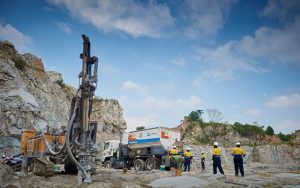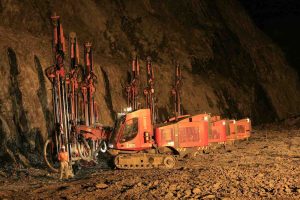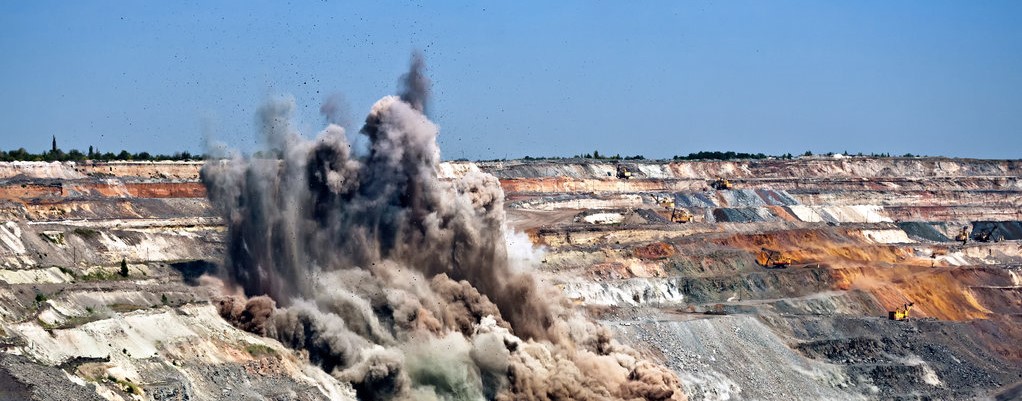Hazards of Drilling and Blasting in Mining and Construction
Introduction: Understanding Drilling and Blasting
In the world of mining and construction, drilling and blasting are essential techniques used to break rocks, excavate tunnels, and create the foundations for various structures. These processes involve the use of explosives and heavy machinery to extract valuable minerals or construct critical infrastructure. While drilling and blasting are undoubtedly effective, they come with a range of hazards that can pose significant risks to both the environment and the safety of workers. In this article, we will explore these hazards in detail, emphasizing the importance of safety measures and responsible practices in the industry.
Hazard 1: Flyrock
What is Flyrock?
One of the most immediate and dangerous hazards associated with drilling and blasting is flyrock. Flyrock refers to the rock fragments or debris that get propelled into the air during a blast. These fragments can travel significant distances, posing a threat to workers, equipment, and nearby structures. The size and velocity of the flyrock can vary greatly, making it difficult to predict the extent of the danger.

Mitigation Strategies:
To mitigate the risk of flyrock hazards, it is essential to establish blast zones, mark them clearly, and ensure all personnel are at a safe distance. Additionally, using blast mats and screens can help contain and redirect flyrock, minimizing the risk of injury or damage.
Hazard 2: Vibration and Ground Movement
The Impact of Vibration:
Drilling and blasting can generate substantial ground vibrations, which have the potential to damage nearby structures, disrupt the natural environment, and even impact the safety of workers. Vibrations can also cause cracks in foundations and structures, leading to long-term structural issues.
Mitigation Strategies:
To address vibration hazards, precise drilling and blasting designs should be implemented. This includes choosing the right explosives, determining appropriate blast patterns, and monitoring vibration levels during blasts. Regular surveys of nearby structures can also help ensure they remain safe and undamaged.
Hazard 3: Dust and Toxic Fumes
Dust and Air Quality Concerns:
Drilling and blasting activities produce significant amounts of dust and potentially toxic fumes. Dust can be harmful to both workers’ respiratory health and the surrounding environment, while toxic fumes, often emitted during blasting, can pose serious health risks.
Mitigation Strategies:
To address dust and toxic fume hazards, the use of water suppression systems, dust collectors, and proper ventilation is crucial. Workers should wear appropriate personal protective equipment, including respiratory masks, to safeguard against inhaling harmful particles. Environmental monitoring and compliance with air quality regulations are also essential.
Hazard 4: Noise Pollution
The Impact of Noise Pollution:
Drilling and blasting operations can generate extremely high noise levels, which not only affect the hearing health of workers but also disturb nearby communities. Prolonged exposure to loud noise can lead to permanent hearing loss, making it a significant concern.
Mitigation Strategies:
Implementing noise-reduction measures such as sound barriers, ear protection for workers, and scheduling blasting activities during less sensitive hours can help mitigate noise pollution. Compliance with noise regulations and community engagement can also address concerns related to noise disturbances.
Hazard 5: Environmental Impact
Environmental Consequences:

Drilling and blasting can have far-reaching environmental consequences. The release of chemicals and pollutants into the surrounding ecosystem, as well as habitat destruction, can disrupt local ecosystems, harm wildlife, and contaminate water sources.
Mitigation Strategies:
Responsible mining and construction companies should adhere to environmental regulations, adopt sustainable practices, and implement comprehensive environmental impact assessments. These actions can help minimize the environmental impact of drilling and blasting activities.
Conclusion: Safety and Responsibility
In conclusion, drilling and blasting, while essential in mining and construction, come with inherent hazards that must be managed effectively. Flyrock, ground vibrations, dust, toxic fumes, noise pollution, and environmental consequences are all potential risks that can be mitigated through proper planning, adherence to safety protocols, and a commitment to responsible practices. For drill it group drilling methods read on.
To ensure the safety of workers, protect the environment, and maintain the integrity of nearby structures, it is essential for industry professionals to prioritize safety measures and responsible drilling and blasting practices. By doing so, we can harness the power of these techniques while minimizing their inherent risks, making the industry safer and more sustainable for all.

